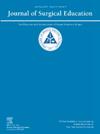某大型机构初步外科住院医师的短期和长期结果分析
IF 2.1
3区 医学
Q1 EDUCATION, SCIENTIFIC DISCIPLINES
引用次数: 0
摘要
目的确定连续18年初步外科住院医师的短期和长期预后。这是一个前瞻性收集,回顾性分析的数据库和当前公开可获得的连续匹配的初步外科住院医生的结果。考虑到医学教育状况和原籍国,关注的结果包括在ACGME赞助项目中的培训和长期的专业实践结果。美国私人非营利性研究学术普外科住院医师项目。在2006年至2025年期间,研究人员对178名连续的外科住院医师的培训结果、原籍国、奖学金选择和学术职位进行了考虑。结果178名住院医师中,32名(18%)来自美国,146名(82%)是国际医学毕业生(IMGs)。27/32(84%)的美国毕业生完成或正在参加美国的培训项目。同样,128/146(88%)的img完成了分类项目。10名img继续在美国以外的地方接受培训。共有106名住院医生接受了普外科培训(10/96),10名美国住院医生,96名IMG住院医生),另外20名住院医生接受了外科专业培训(6/14)。另外30名住院医师(14/16)接受过放射学(诊断或介入)、麻醉学或急诊医学培训。78名img完成了普通外科亚专科的奖学金培训,其中最常见的专业包括结直肠外科、整形外科、外科肿瘤学和血管外科。IMG的居民来自世界各地(41个国家),其中亚洲(54个)、欧洲(53个)和北美(41个)的人数最多。然而,只有3名居民返回了原籍国。结论外科项目可以选择申请人,并为来自世界各地的img提供初步的外科培训,如果他们选择、咨询和支持美国毕业生和img,他们可以成功地进入分类项目。但是,监工似乎不太可能在培训后返回原籍国。本文章由计算机程序翻译,如有差异,请以英文原文为准。
Short and Long-Term Outcomes From a Large Single Institution’s Experience With Preliminary Surgical Residents
Objective
To identify short and long-term outcomes of consecutive preliminary surgical residents over an 18-year selection period.
Design
This is a prospectively collected, retrospectively analyzed database and current publicly available outcomes of consecutively matched preliminary surgical residents. Outcomes of interest include training in ACGME sponsored programs and long-term professional practice outcomes, considering status of medical education and country of origin.
Setting
Private non-profit research academic general surgery residency program in the United States.
Participants
178 consecutive preliminary surgical residents between 2006 and 2025 were considered with respect to training outcomes, country of origin, fellowship selection, and academic positions.
Results
Of the 178 residents, 32 (18%) were from the US, and 146 (82%) were International Medical Graduates (IMGs). 27/32 (84%) of US graduates completed or are in categorical US training programs. Similarly, 128/146 (88%) of IMGs completed/are in categorical programs. 10 IMGs continued training outside of the US. 106 total residents trained in general surgery (10/96), 10 US, 96 IMG) with an additional 20 (6/14) training in surgical specialties. 30 additional residents (14/16) trained in radiology (diagnostic or interventional), anesthesiology, or emergency medicine. 78 IMGs completed fellowship training in general surgery subspecialties, with the most common specialties including colorectal surgery, plastic surgery, surgical oncology, and vascular surgery. IMG residents were selected from around the world (41 countries), with the highest numbers from Asia (54), Europe (53), and North America (41). Only 3 residents, however, have returned to their country of origin.
Conclusions
Surgical programs can select applicants and offer preliminary surgical training to IMGs from around the world with successful placement into categorical programs if they select, counsel and support both US graduates and IMGs. IMGs, however, seem unlikely to return to the countries of origin following training.
求助全文
通过发布文献求助,成功后即可免费获取论文全文。
去求助
来源期刊

Journal of Surgical Education
EDUCATION, SCIENTIFIC DISCIPLINES-SURGERY
CiteScore
5.60
自引率
10.30%
发文量
261
审稿时长
48 days
期刊介绍:
The Journal of Surgical Education (JSE) is dedicated to advancing the field of surgical education through original research. The journal publishes research articles in all surgical disciplines on topics relative to the education of surgical students, residents, and fellows, as well as practicing surgeons. Our readers look to JSE for timely, innovative research findings from the international surgical education community. As the official journal of the Association of Program Directors in Surgery (APDS), JSE publishes the proceedings of the annual APDS meeting held during Surgery Education Week.
 求助内容:
求助内容: 应助结果提醒方式:
应助结果提醒方式:


